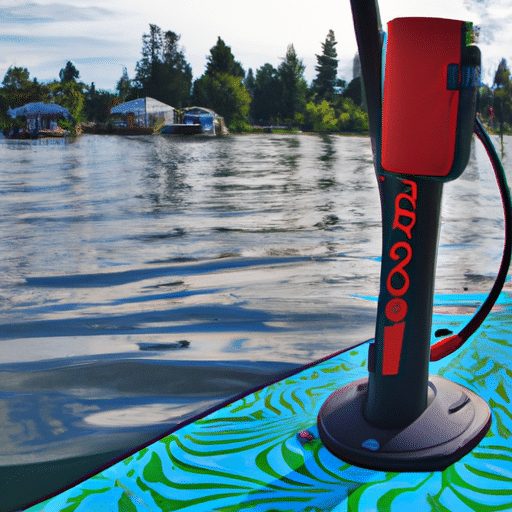In the quest to find the most reliable pump for SUP (Stand Up Paddleboarding), enthusiasts are faced with a multitude of options. From manual hand pumps to electric-powered ones, the variety can be overwhelming. However, fear not, as we embark on a journey to uncover the ultimate answer to the age-old question – which type of pump reigns supreme in the world of SUP? Join us as we explore the pros and cons of each pump type, providing you with valuable insights to make an informed decision. So, grab your paddle and let’s dive into the fascinating world of SUP pumps!
1. Electric pumps
1.1 Benefits of electric pumps
Electric pumps are a popular choice for inflating Stand-Up Paddleboards (SUPs), and for good reason. One of the main benefits of electric pumps is their convenience. With just the push of a button, you can efficiently inflate your SUP without the need for manual effort. This is especially helpful if you have multiple boards to inflate or if you have limited physical strength or stamina.
Another advantage of electric pumps is their speed. These pumps can inflate your SUP much faster than manual pumps, saving you valuable time and energy. This is particularly beneficial if you’re in a hurry to hit the water or if you’re inflating your SUP in a remote location where time is of the essence.
Furthermore, electric pumps often come with adjustable pressure settings, allowing you to easily inflate your SUP to the desired level. This ensures that you achieve optimal stability and performance on the water. Some electric pumps even have built-in pressure sensors that automatically shut off once the desired pressure is reached, preventing over-inflation and potential damage to your board.
1.2 Drawbacks of electric pumps
While electric pumps offer convenience and speed, they do come with a few drawbacks. One of the main disadvantages is their reliance on a power source. Electric pumps typically require access to electricity, either through a wall outlet or a separate battery pack. This can be limiting if you’re inflating your SUP in remote areas without access to power, or if you’re on a camping trip where electricity may not be readily available.
Another drawback of electric pumps is their bulkiness and weight. These pumps often come with a larger and heavier design compared to manual pumps. This can make them less portable and more cumbersome to transport, especially if you’re traveling with limited storage space or if you need to carry the pump for long distances.
Additionally, electric pumps may be more prone to mechanical malfunctions or technical issues compared to manual pumps. If your electric pump breaks or stops working, it can be more challenging to find a quick solution, especially if you’re in a remote location without access to repair services. It’s important to consider the reliability and durability of your electric pump before relying solely on this type of inflation method.
2. Manual pumps
2.1 Benefits of manual pumps
Manual pumps, also known as hand pumps, are a traditional and reliable choice for inflating SUPs. One of the main benefits of manual pumps is their simplicity. These pumps require no power source other than your own physical strength and effort. This means you can inflate your SUP anywhere, anytime, without being dependent on electricity or batteries.
Another advantage of manual pumps is their portability. Compared to electric pumps, manual pumps are generally lightweight and compact, making them easy to carry and store. This is particularly beneficial if you frequently travel with your SUP or if you need to inflate it in remote locations where power sources may not be available.
Manual pumps also offer a greater sense of control over the inflation process. With a manual pump, you can manually adjust the pressure and monitor the progress as you inflate your SUP. This allows you to customize the inflation to suit your preferences and ensures that you achieve the desired level of rigidity and stability on the water.
2.2 Drawbacks of manual pumps
While manual pumps provide simplicity and portability, they do have some drawbacks to consider. The main disadvantage of manual pumps is the physical effort required to inflate your SUP. Depending on the size and thickness of your board, manual pumping can be quite strenuous and time-consuming. It requires repeated pumping motions, which can be tiring and may not be suitable for individuals with limited physical strength or stamina.
Furthermore, manual pumps may not achieve the same speed as electric pumps. Manual inflation can take longer, especially if you need to inflate multiple boards or if you’re in a rush to get on the water. This can be inconvenient if you’re pressed for time or if you prefer a more efficient and quick inflation process.
Another drawback of manual pumps is the potential for over-inflation. Without built-in pressure sensors or automatic shut-off mechanisms, it’s possible to over-inflate your SUP with a manual pump. This can lead to stability issues and potential damage to the board if not closely monitored. It’s important to exercise caution and regularly check the pressure with a separate gauge when using a manual pump.
In conclusion, electric pumps offer convenience and speed, making them a popular choice for inflating SUPs. However, they may be limited by their reliance on a power source and their bulkier design. On the other hand, manual pumps provide simplicity and portability, but require physical effort and may not be as efficient. It ultimately comes down to personal preference and specific circumstances when choosing the most reliable pump for your SUP.





































